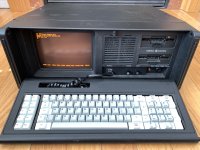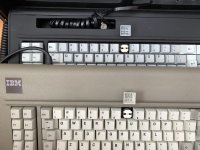vwestlife
Veteran Member
General Electric Workmaster (Fanuc)
I came across this computer on the web and it didn't take long for me to recognize it as an IBM 5155 Portable PC, painted black and with different drives and a different keyboard... but evidently the same hardware inside, as evidenced by the IBM Cassette BASIC screen.
Anybody have any more information on this oddity, besides what is posted on the web page? It's the first time I've heard of a General Electric-branded computer. A quick Google search indicates that the Workmaster was used for "industrial automation." So is this the IBM equivalent of the Bell & Howell black Apple ][ Plus?

I came across this computer on the web and it didn't take long for me to recognize it as an IBM 5155 Portable PC, painted black and with different drives and a different keyboard... but evidently the same hardware inside, as evidenced by the IBM Cassette BASIC screen.
Anybody have any more information on this oddity, besides what is posted on the web page? It's the first time I've heard of a General Electric-branded computer. A quick Google search indicates that the Workmaster was used for "industrial automation." So is this the IBM equivalent of the Bell & Howell black Apple ][ Plus?




